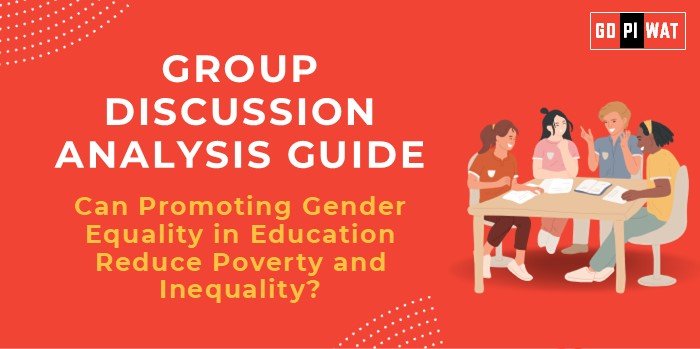📚 Can Promoting Gender Equality in Education Reduce Poverty and Inequality?
🌟 Introduction to Gender Equality in Education and Poverty Reduction
Opening Context: “Gender equality in education is not just a social goal; it is a strategic driver for economic growth and poverty alleviation. Studies have consistently shown that educating girls yields one of the highest returns on investment globally.”
Topic Background: The concept links education and socio-economic equality, focusing on equipping women with knowledge and skills to break poverty cycles. Global efforts like UNESCO’s Education for All initiative and India’s Beti Bachao Beti Padhao campaign aim to address these issues.
📊 Quick Facts and Key Statistics
- Education and GDP: A 1% increase in female education boosts GDP by 0.3% (UNESCO).
- Illiteracy Impact: Women comprise two-thirds of the world’s illiterate adults, limiting economic participation.
- India’s Female Literacy Rate: 70.3% (Census 2021), significantly lower than males at 84.7%.
- Impact of Gender Parity: Closing the gender gap in education could add $12 trillion to global GDP (McKinsey Global Institute).
🧑🤝🧑 Stakeholders and Their Roles
- Governments: Policymaking, funding, and program implementation (e.g., Sarva Shiksha Abhiyan in India).
- NGOs: Grassroots mobilization and community-level initiatives, such as Teach for India.
- Corporates: CSR activities supporting scholarships, STEM programs for girls.
- Global Organizations: Advocacy and funding (e.g., UN Women, UNICEF).
✅ Achievements and Challenges
Achievements
- Higher Enrollment Rates: Female enrollment in primary schools in India reached 94% in 2021 (Ministry of Education).
- Improved Outcomes: Educated women in India contribute 17% higher to household income.
- Global Success Stories: Rwanda achieved gender parity in primary education.
- Economic Growth: Women’s labor force participation increases with education.
Challenges
- Cultural Barriers: Early marriages and gender stereotypes persist.
- Access Issues: Rural areas face lack of schools and safe transport.
- Resource Gaps: Insufficient funding for gender-specific programs.
Global Comparisons
Nordic Countries: Excel in education equity.
Case Study: Bihar’s KGBV scheme increased rural girls’ enrollment by 23%.
💬 Structured Arguments for Discussion
- Supporting Stance: “Educating girls transforms societies, ensuring better health, reduced child mortality, and poverty eradication.”
- Opposing Stance: “While impactful, promoting gender equality alone cannot address systemic poverty without parallel economic reforms.”
- Balanced Perspective: “Education is critical, but multi-sectoral strategies are essential to make gender equality impactful in poverty reduction.”
✨ Effective Discussion Approaches
- Opening Approaches:
- “Empowering girls through education has proven to reduce poverty levels significantly, as seen in Kerala.”
- “Despite progress, challenges like cultural stigmas hinder education’s full potential.”
- Counter-Argument Handling:
- “While poverty reduction requires broader reforms, education creates the foundation for long-term change.”
- “Critics argue cultural barriers persist, but examples like Rwanda show these can be overcome.”
📈 Strategic Analysis of Strengths and Weaknesses
- Strengths: Proven link between education and economic growth, global momentum on SDGs.
- Weaknesses: Deep-seated cultural norms, resource disparities in rural areas.
- Opportunities: Technology-enabled education, partnerships with private entities.
- Threats: Political instability, rising income inequality.
🏫 Connecting with B-School Applications
- Real-World Applications: Designing CSR programs or public policies focusing on education equality.
- Sample Interview Questions:
- “How can education equality bridge the rural-urban divide in India?”
- “Evaluate the economic impact of gender-equal education.”
- Insights for B-School Students: Strategies for inclusive growth, social entrepreneurship, and rural market development.


